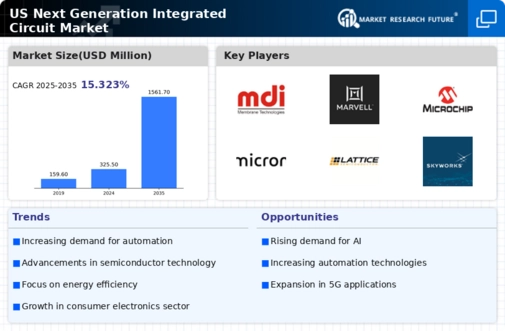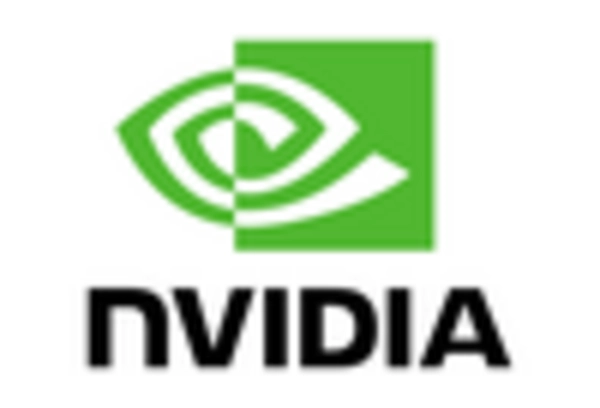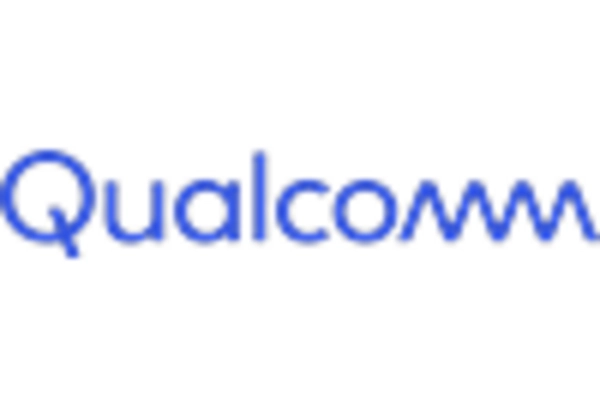Expansion of 5G Infrastructure
The rollout of 5G technology is a pivotal driver for the next generation-integrated-circuit market. With the anticipated increase in mobile data traffic, estimated to grow by 50% annually, there is a pressing need for advanced integrated circuits that can support faster data transmission and lower latency. The 5G infrastructure requires specialized chips that can handle the demands of new applications such as IoT devices and smart cities. This expansion is expected to create a market opportunity worth over $20 billion by 2026, thereby propelling the next generation-integrated-circuit market forward.
Growing Focus on Cybersecurity Solutions
As digital threats become increasingly sophisticated, the next generation-integrated-circuit market is witnessing a growing focus on cybersecurity solutions. Integrated circuits that incorporate advanced security features are essential for protecting sensitive data across various applications, including finance and healthcare. The cybersecurity market is projected to grow to $300 billion by 2026, creating a substantial demand for secure integrated circuits. This trend is likely to drive innovation within the next generation-integrated-circuit market, as manufacturers strive to develop solutions that address these critical security challenges.
Rise of Internet of Things (IoT) Applications
The proliferation of Internet of Things (IoT) devices is significantly influencing the next generation-integrated-circuit market. As more devices become interconnected, the demand for efficient, low-power integrated circuits is increasing. In 2025, the IoT market is projected to exceed $1 trillion, with a substantial portion of this growth attributed to the need for advanced integrated circuits. These circuits must be capable of processing data locally to reduce latency and enhance performance. Consequently, the next generation-integrated-circuit market is likely to adapt to these requirements, fostering innovation in circuit design and functionality.
Surge in Demand for High-Performance Computing
The next generation-integrated-circuit market is experiencing a surge in demand driven by the increasing need for high-performance computing solutions. Industries such as data centers, cloud computing, and artificial intelligence are pushing the boundaries of processing power. In 2025, the market for high-performance computing is projected to reach approximately $50 billion, indicating a robust growth trajectory. This demand is compelling manufacturers to innovate and produce integrated circuits that can handle complex computations efficiently. As a result, the next generation-integrated-circuit market is likely to witness significant advancements in design and manufacturing processes to meet these evolving requirements.
Increased Investment in Research and Development
Investment in research and development (R&D) is a critical driver for the next generation-integrated-circuit market. Companies are allocating substantial resources to innovate and develop cutting-edge technologies that enhance circuit performance and efficiency. In 2025, R&D spending in the semiconductor sector is expected to reach $30 billion, reflecting a commitment to advancing integrated circuit technology. This investment is likely to lead to breakthroughs in materials and manufacturing processes, thereby positioning the next generation-integrated-circuit market for sustained growth and competitiveness in the global landscape.















Leave a Comment